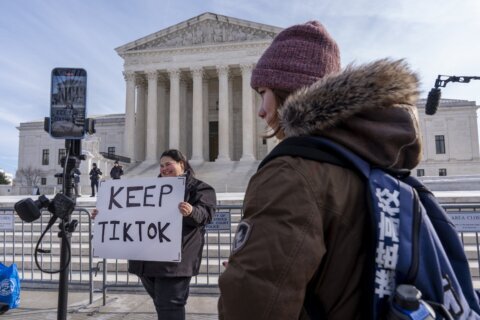As Los Angeles continues to grapple with the widespread devastation of the recent wildfires, the impact extends far beyond incinerated buildings and scorched landscapes.
The plumes of thick, acrid smoke and ash that blanket the Los Angeles neighborhoods pose significant health risks.
If you live within range of wildfire smoke, here’s how you can protect your lungs and safeguard your health.
[READ: A Patient’s Guide to Walking Pneumonia.]
What’s in Wildfire Smoke?
Wildfire smoke is a combination of various gases, chemicals, vapors and particle pollution that come from burning brushes and trees, as well as homes, cars and other structures in the urban landscape.
The main components of wildfire smoke include:
— Gas. Various gasses — including carbon monoxide, carbon dioxide, nitrogen oxide and volatile organic compounds — are released into the air during a wildfire.
— Hazardous air pollutants. Polycyclic aromatic hydrocarbons are a type of hazardous air pollutant that is produced from burning coal, oil, gas, wood and garbage.
— Water vapor. When plants, soil and other organic matter burn, the water stored in them is released as water vapor.
— Particle pollution. Wildfire smoke contains high concentrations of the tiny particulate matter with a diameter of 2.5 microns or smaller, known as PM2.5, that are made up of soot, organic compounds, metals, soil, pollen and mold spores. These particles, which are approximately 30 times smaller than the width of human hair, are the main public health concern from wildfire smoke, as they can travel through the nose and throat into the lungs and bloodstream, causing inflammation and subsequent symptoms.
[Read: What Is Chronic Inflammation?]
Common Smoke Inhalation Symptoms
When you breathe in PM2.5, it triggers a response by your lungs to try to clear the foreign particles from your body, leading to common symptoms of smoke inhalation.
“Those little, tiny particles can embed all the way into your air sacs … and airways,” explains Dr. Stephanie Christenson, an associate professor of pulmonary, critical care, allergy and sleep medicine and attending physician in the pulmonary clinic at the University of California, San Francisco. “Any time the lungs see abnormal things, like pathogens or particulate matter, they need to have a ‘get-out’ response. … Your airways can get really irritated because (your lungs) are trying to get things out of them.”
Short-term respiratory and other symptoms include:
— Coughing
— Upper airway congestion
— Itchy, burning eyes
— Hazy vision from eye irritation
— Headaches
— Heart racing
If you have an underlying lung condition, smoke sensitivity can exacerbate these symptoms:
— Coughing
— Shortness of breath
— Bronchospasm, or muscle-tightening and narrowing of your airways
— Wheezing
— Asthma flares
— Chest tightness or sensation of suffocation
— Stinging eyes
— Increased use of medications for asthma, chronic obstructive pulmonary disease (COPD) or related conditions
[SEE: How to Describe Medical Symptoms to Your Doctor.]
Who’s at Risk?
Wildfire smoke can affect anyone, but certain groups are particularly vulnerable:
— People with chronic respiratory disease, such as asthma, COPD, bronchitis and emphysema
— Heart disease patients
— Children
— Older adults
— Homeless people, who may have underlying health conditions
Health Effects of Wildfire Smoke
Both acute and prolonged exposure to PM2.5 can cause serious health effects, including:
— Oxidative stress
— Impaired vascular function
As a result, whether you’ve been breathing in smoke for a few hours to days or months to years, studies by the U.S. Environment Protection Agency and other researchers shows that PM2.5 can enter the bloodstream, causing or worsening heart outcomes, including:
— Stroke
— Cardiac arrest
— Heart failure
— Atherosclerosis, a condition characterized by clogged arteries
How to Treat Wildfire Smoke Inhalation
Medications have a role in treating persistent, smoke-related respiratory symptoms.
— Bronchodilator drugs, like albuterol, can ease breathing by widening the airways
— Inhaled steroids for patients with asthma
However, these medications have a limited effect when there is heavy, prolonged smoke in the air.
While over-the-counter medications for dry eyes, nasal congestion and cough may relieve some dryness or inflammation in those areas, Christenson says they may not be all that helpful and are not going to be as effective as staying away from smoke.
“The best thing to do … is try to avoid exposure,” Christenson says.
For those at-risk individuals, experts encourage watching your symptoms. If you have shortness of breath or if you feel like you’re having an exacerbation, be sure to seek out medical care and consider visiting a physician or an emergency room if you’re in any significant distress.
How to Protect Yourself From Wildfire Smoke
Although risk is higher for certain vulnerable groups, everyone can be affected if area air quality is bad enough. Here’s how you can protect yourself and your loved ones.
Indoor protection
Staying inside is your best bet with wildfire smoke in the environment, particularly if you’re in a vulnerable group.
“When there is smoke in the air, it’s visible, and you can smell it, it’s best to not be outside,” says Dr. May-Lin Wilgus, a pulmonologist at UCLA Health. “If you’re in immediate danger, evacuation is of utmost importance. But if you’re not in immediate danger from the fire and are just affected by smoke in the air, it’s better to stay indoors.”
However, because outdoor air pollution can infiltrate houses from cracks and other openings, you’ll need to take extra steps to keep indoor air as clean as possible, including:
— Close windows and doors
— Run HVAC systems on the recirculation settings. (Be sure to check the filter rating on your HVAC unit. The minimal efficiency reporting value (MERV) system reflects an air filter’s ability to capture larger particulate matter between 3 and 10 microns in diameter, which also occurs in smoky air.)
— Install high-quality HVAC filters
— Consider adding a high-efficiency particulate air (HEPA) filter
— Use a stand-alone air purifier unit to create a “clean” room
Outdoor protection
Life goes on and it’s not always possible to shelter from smoke indoors. When you must go out, take these precautions:
— Limit outdoor exposure as much as you can
— Balance healthy outdoor exercise benefits with harmful smoke risks
— Check the current air quality index (AQI) in your area
— Reduce outdoor activity when the AQI is high
— Wear a high-quality N95 mask if you need to go outdoors
Air quality ratings
Whether you’re staying indoors or outdoors, it’s important to remain vigilant.
“Be aware of what is going on right outside of your home,” Wilgus advises. “Seeing smoke or smelling smoke is the best indication of whether there is anything you need to worry about.”
One of the best ways to check outdoor air conditions, keep an eye on air quality reports.
The AQI is the Environmental Protection Agency’s system for reporting air pollution. A rise in AQI means higher levels of air pollution and increased health concerns. To get up-to-the-minute air quality ratings, simply plug into the interactive AirNow website. The color-coded AQI encompasses six categories ranging from good (green) to hazardous (maroon).
Air quality index
Bottom Line
As wildfires become increasingly common and widespread, the threat of smoke on our bodies is a growing public health concern.
While experts continue to study the long-term effects of wildfire smoke on our health, there are protective measures people can take to mitigate the impact, such as staying indoors, using high-quality air purifiers and wearing N95 masks.
“We know the biology of the lung, and the airways do not like seeing things they’re not used to,” Christenson says. “Inhalation of high levels of exposure is really something (the lungs) don’t like, so being as careful and protective as possible is important.”
More from U.S. News
Ways to Boost Your Immune System
16 Ways Your Body Adjusts to a New Climate
9 Ways Saliva Reflects Your Health
How Wildfire Smoke Affects Your Lungs originally appeared on usnews.com
Update 01/14/25: This story was published at an earlier date and has been updated with new information.









